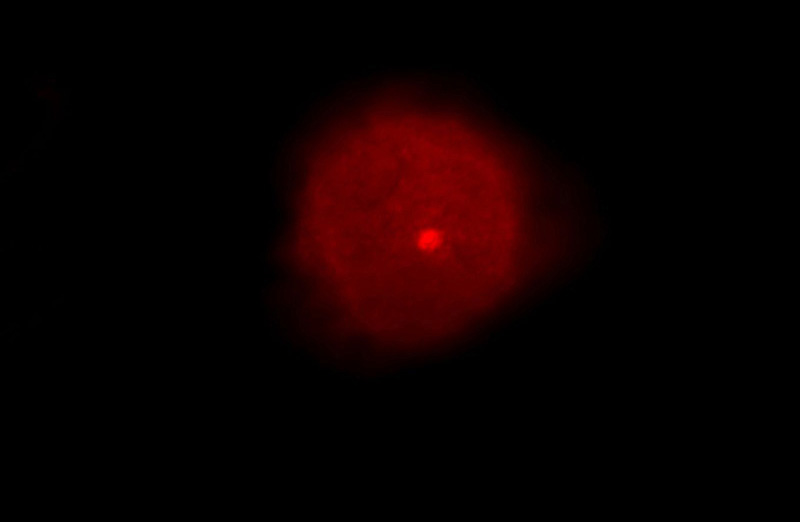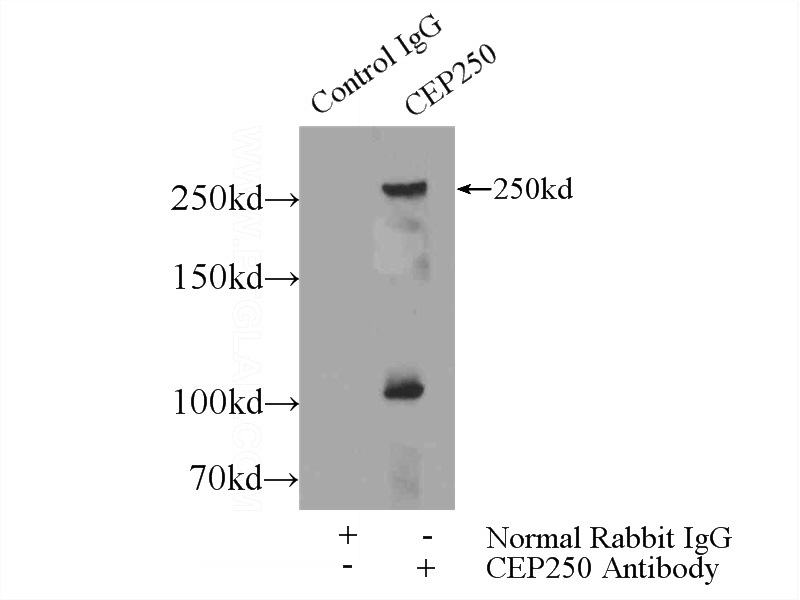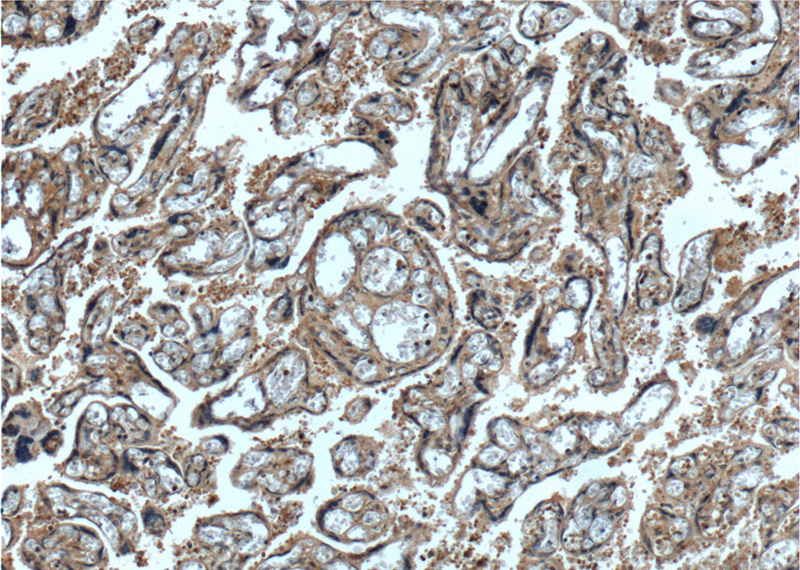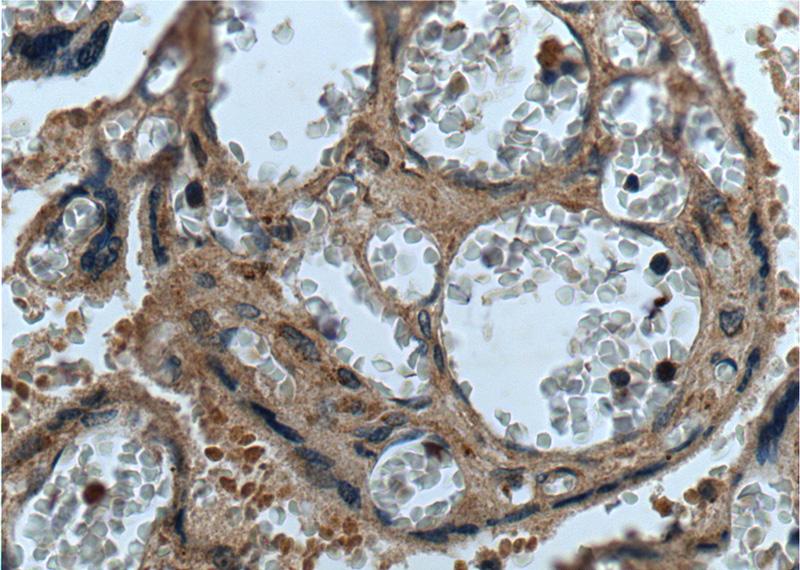-
Product Name
CEP250/CNAP1 antibody
- Documents
-
Description
CEP250/CNAP1 Rabbit Polyclonal antibody. Positive WB detected in HeLa cells. Positive IP detected in HeLa cells. Positive IHC detected in human placenta tissue, human brain tissue, human heart tissue, human lung tissue, human ovary tissue, human spleen tissue. Positive IF detected in Hela cells, HepG2 cells. Observed molecular weight by Western-blot: 250 kDa
-
Tested applications
ELISA, WB, IF, IP, IHC
-
Species reactivity
Human,Mouse,Rat; other species not tested.
-
Alternative names
250 kDa centrosomal protein antibody; C NAP1 antibody; Centrosomal protein 2 antibody; centrosomal protein 250kDa antibody; CEP2 antibody; CEP250 antibody; CNAP1 antibody; C-NAP1 antibody
-
Isotype
Rabbit IgG
-
Preparation
This antibody was obtained by immunization of CEP250/CNAP1 recombinant protein (Accession Number: BC001433). Purification method: Antigen affinity purified.
-
Clonality
Polyclonal
-
Formulation
PBS with 0.02% sodium azide and 50% glycerol pH 7.3.
-
Storage instructions
Store at -20℃. DO NOT ALIQUOT
-
Applications
Recommended Dilution:
WB: 1:200-1:2000
IP: 1:200-1:2000
IHC: 1:50-1:500
IF: 1:10-1:100
-
Validations

Immunofluorescent analysis of Hela cells, using CEP250 antibody Catalog No:109270 at 1:25 dilution and Rhodamine-labeled goat anti-rabbit IgG (red).

HeLa cells were subjected to SDS PAGE followed by western blot with Catalog No:109270(CEP250,C-NAP1 antibody) at dilution of 1:500

IP Result of anti-CEP250,C-NAP1 (IP:Catalog No:109270, 5ug; Detection:Catalog No:109270 1:500) with HeLa cells lysate 1200ug.

Immunohistochemistry of paraffin-embedded human placenta tissue slide using Catalog No:109270(CEP250,C-NAP1 Antibody) at dilution of 1:200 (under 10x lens).

Immunohistochemistry of paraffin-embedded human placenta tissue slide using Catalog No:109270(CEP250,C-NAP1 Antibody) at dilution of 1:200 (under 40x lens).
-
Background
CEP250, also known as C-Nap1, is a coiled-coil protein that localizes to the proximal ends of mother and daughter centrioles. It is required for centriole-centriole cohesion during interphase of the cell cycle. It dissociates from the centrosomes when parental centrioles separate at the beginning of mitosis. The protein associates with and is phosphorylated by NIMA-related kinase 2, which is also associated with the centrosome.
-
References
- Fang G, Zhang D, Yin H, Zheng L, Bi X, Yuan L. Centlein mediates an interaction between C-Nap1 and Cep68 to maintain centrosome cohesion. Journal of cell science. 127(Pt 8):1631-9. 2014.
- Zhao J, Zou Y, Liu H. TEIF associated centrosome activity is regulated by EGF/PI3K/Akt signaling. Biochimica et biophysica acta. 1843(9):1851-64. 2014.
- Zhang Y, Wang Y, Wei Y. The tumor suppressor proteins ASPP1 and ASPP2 interact with C-Nap1 and regulate centrosome linker reassembly. Biochemical and biophysical research communications. 458(3):494-500. 2015.
- Martino J, Holmes AL, Xie H, Wise SS, Wise JP. Chronic Exposure to Particulate Chromate Induces Premature Centrosome Separation and Centriole Disengagement in Human Lung Cells. Toxicological sciences : an official journal of the Society of Toxicology. 147(2):490-9. 2015.
Related Products / Services
Please note: All products are "FOR RESEARCH USE ONLY AND ARE NOT INTENDED FOR DIAGNOSTIC OR THERAPEUTIC USE"
